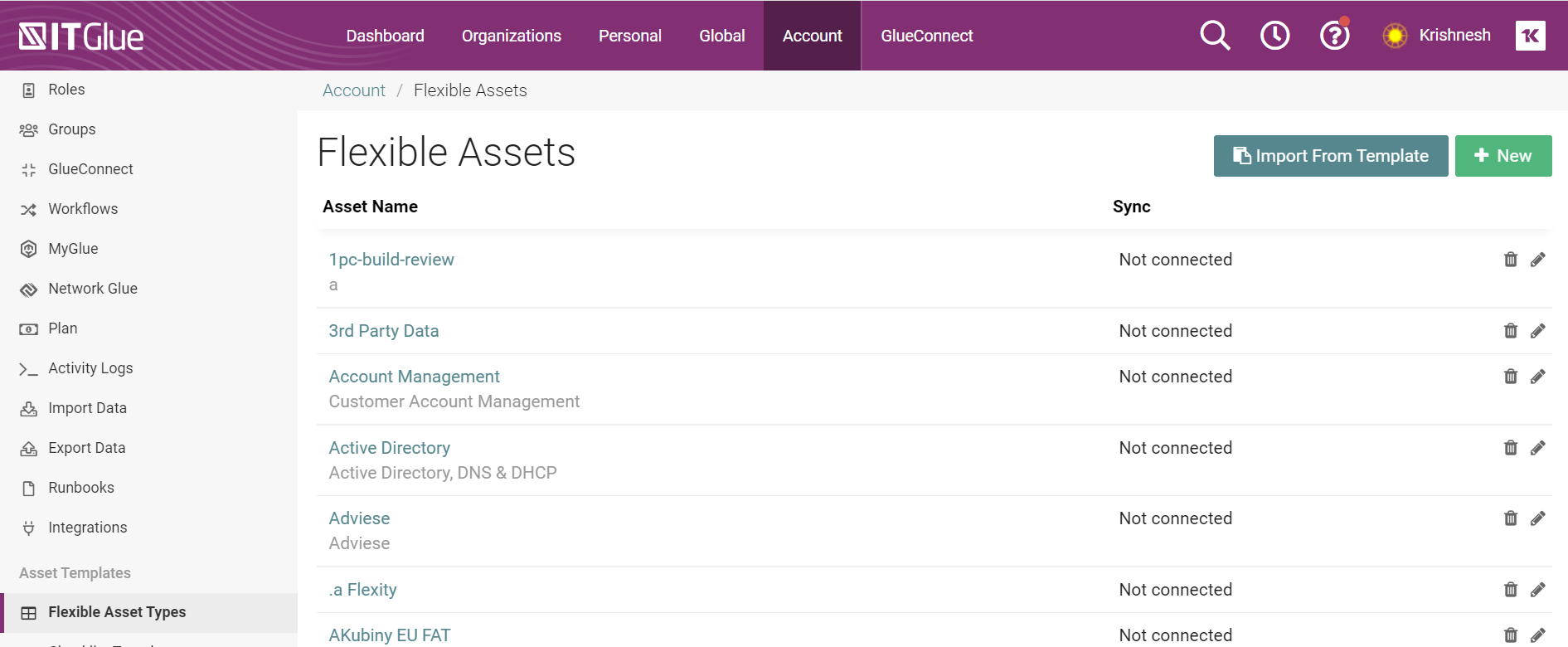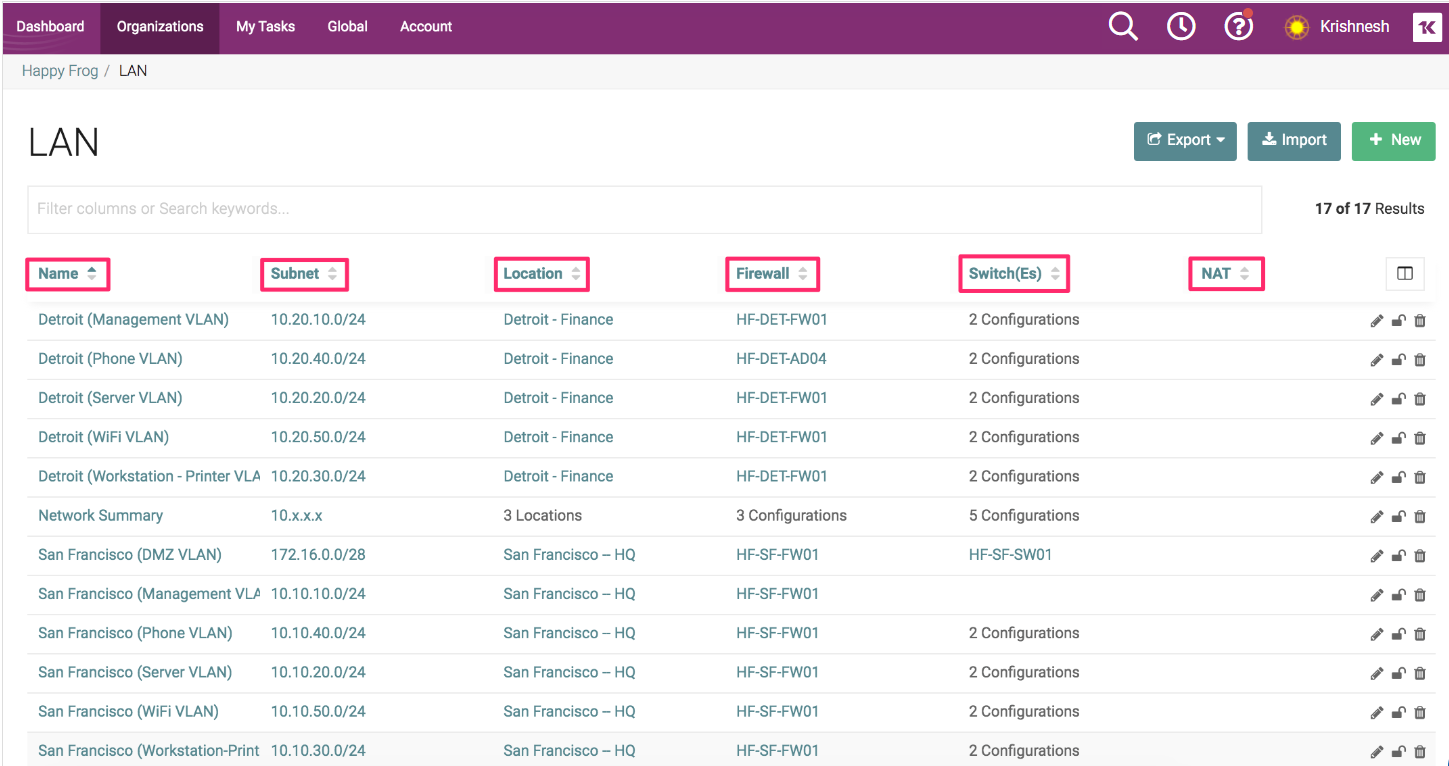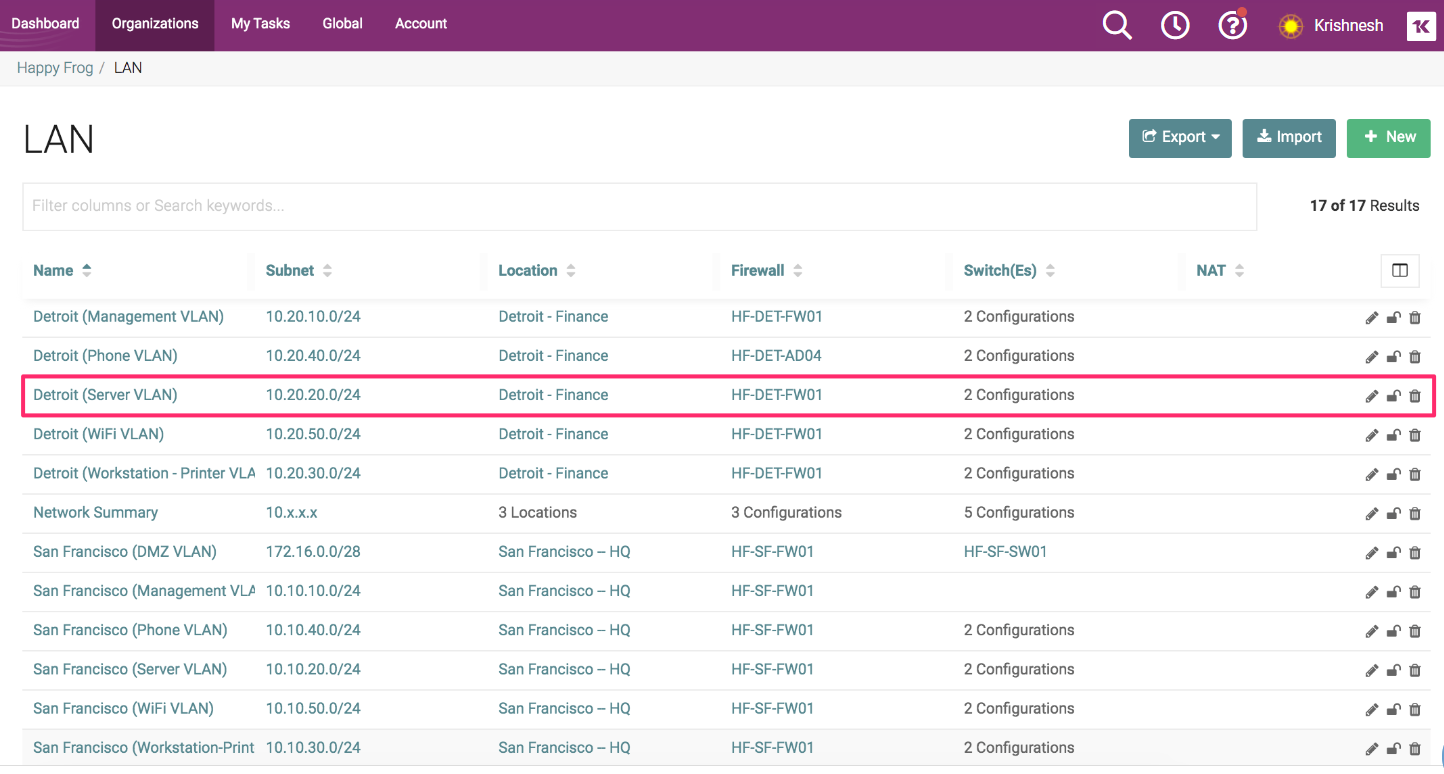Introduction to flexible assets
Introduction
IT Glue lets you create your own way of organizing your data while giving you the ability to create standardized, cross-client documentation.
Flexible assets make all of this possible by providing you with tools to set up your own structured, field-driven documentation templates and adapt them to your specialized needs. Use flexible assets to help you document client infrastructure, pull in information from external sources via our API, make simple, reusable checklists for your team, and so on.
For example, let's say you need to document a local area network. With proper planning, the IP network can be better organized and visualized at a high-level using flexible assets than through the individual networking devices. A flexible asset can capture all LAN information in one place, including the subnet, routers, DHCP server, DHCP scope, switches, etc. We will use this example throughout the rest of this article.
Instructions
There are five (5) basic components of flexible assets:
1 - Flexible Asset Types
Each IT Glue account can have one or more flexible asset types, similar to worksheets in a spreadsheet. Flexible asset types are used to house one particular type of documentation. See some examples of different flexible asset types in the screenshot below:
2 - Pre-built Templates
Streamline how you build your flexible assets by using pre-built Templates. Templates are an excellent starting place when deciding on how to structure your data in IT Glue. Our Documentation Guide provides tips and tricks on how to use these templates. Keep in mind that you are free to customize the templates to your specific needs.
3 - List Views
List views are one of the ways you will see your data as you are navigating IT Glue. Each flexible asset will have a unique list view with its own column headings, hidden columns, and filters.
4 - Fields
Fields are the IT Glue equivalent of a spreadsheet column. Each IT Glue field can have a special field type for different kinds of rich content instead of having only short text or number inputs to work with. The field types include file upload, checkbox, long text, and drop-down, to name a few.
5 - Flexible Assets
Continuing with the spreadsheet analogy, flexible assets are the IT Glue equivalent of a row in a specific worksheet. When viewed in list format, each flexible asset is basically an item in a list. You can open a flexible asset to get a complete overview of the flexible asset data in that row.
For more information about flexible assets, check out our Quick guide for flexible assets topic.
There are many ways to document your data depending on the context, the size of your team and client base, the maturity of your processes, and the ROI of the specific data. Contact IT Glue Support for guidance.



